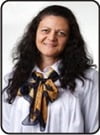The English Language and Cultural Appropriateness
Abstract
ABSTRACT: English language acquisition needs to be taught from a multi-ethnic and multi-cultural perspective, with the right teaching materials, when pursuing cultural sensitivity and equality. After a brief historical overview and an explanation of the various definitions associated with English language acquisition, English is described in its multiple varieties. It is increasingly contended that non-native English speakers outnumber native speakers in a rapidly globalising world. Case studies are used to justify the need for culturally appropriate teaching materials and the challenges that exist. Change has been slow in addressing the inadequacies in current teaching materials and this paper concludes by suggesting some bottom-up approaches will transform the teaching pedagogy and teachers’ attitudes. The professional development of teachers, together with the support of enlightened linguistic researchers can perhaps lead to an educational philosophy that cuts across colour, creed and race to bring about success to language learners. Thus, creating a better understanding of the English language in the context of cultural appropriateness.
Key words: English language, non-native English speakers, bottom-up approaches, and better understanding of the English language.

About the Authors: Dr. Vannessa Misso and Dr. Nina Maadad are Lecturers at the School of Education UOA (University of Adelaide), Australia. One of them, for academic purposes, can be reached at: nina.maadad@adelaide.edu.au
How to cite this article? Misso, Vannessa & Dr. Nina Maadad. (2011). “The English Language and Cultural Appropriateness” in SOSIOHUMANIKA: Jurnal Pendidikan Sains Sosial dan Kemanusiaan, Vol.4, No.1 [Mei], pp.111-128. Bandung, Indonesia: Minda Masagi Press owned by ASPENSI, ISSN 1979-0112.
Chronicle of article: Accepted (March 27, 2011); Revised (April 29, 2011); and Published (May 20, 2011).
Full Text:
PDFReferences
Abdul Hamied, Fuad. (1994). “EFL Programme Surveys in Indonesian Schools: Towards EFL Curriculum Implementation for Tomorrow” in G.M. Jacobs [ed]. Language Classrooms of Tomorrow: Issues and Responses. Singapore: SEAMEO Regional Language Centre, republished in 1997.
Auerbach, E. & D. Burgess. (1985). “Dialogues Around: The Hidden Curriculum of Survival ESL” in J. Sharkey & K. Johnson [eds]. The TESOL Quarterly Dialogues: Rethinking Issues of Language, Culture, and Power. Virginia, USA: Teachers of English to Speakers of Other Languages, Inc., pp.7-17.
Brook, G.L. (1973). Varieties of English. London, England: MacMillan Press.
Crystal, D. (1994). “What is Standard English?” in http://www.davidcrystal.com/DC_articles/English52.pdf [accessed in Adelaide, Australia: 17 November 2009].
Crystal, D. (2004). The Stories of English. London, England: Penguin.
Gilmore, A. (2007). “Authentic Materials and Authenticity in Foreign Language Learning” in http://journals.cambridge.org.proxy.library.adelaide.edu.au/download.php?file=%2FLTA40_02%2FSO2 [accessed in Adelaide, Australia: 8 October 2008].
Graddol, D. (1997). “The Future of English?” in http://www.britishcouncil.org/learning-elt-future.pdf [accessed in Adelaide, Australia: 17 November 2009].
Grzega, J. (2005). “Reflections on Concepts of English for Europe: British English, American English, Euro-English, Global English” in http://www1.ku-eichstaett.de/SLF/EngluVglSW/ELiX/grzega-053.pdf [accessed in Adelaide, Australia: 17 November 2009].
IELTS Handbook. (2007). “Cambridge, UK: University of Cambridge, Local Examinations Syndicate” in http://www.britishcouncil.org/africa-ielts-handbook.pdf [accessed in Adelaide, Australia: 16 November 2009].
Jacobs, G.M. [ed]. (1997). Language Classrooms of Tomorrow: Issues and Responses. Singapore: SEAMEO Regional Language Centre, Anthology Series 38.
Jolly, D. & R. Bolitho. (1998). “A Framework for Materials Writing” in B. Tomlinson [ed]. Materials Development in Language Teaching. UK: Cambridge University Press.
Kachru, B. (1982). “Introduction” in Braj B. Kachru [ed]. The Other Tongue: English Across Cultures. University of Illinois, USA: Pergamon Press, pp.1-12.
Kachru, B. (1983). The Other Tongue English Across Cultures. Oxford, England: Pergamon Press.
Kachru, B. (2005). Asian Englishes Beyond the Canon. Hong Kong: Hong Kong University Press.
Karmani, S. & R. Phillipson. (2005). “Linguistic Imperialism 10 Years On: An Interview with Robert Phillipson” in ELT Journal, Vol.59 [July], pp.244-249. Also available at: www.doi:10.1093/elt/cci045 [accessed at Adelaide, Australia: 10 March 2011].
Kohler, M. (2003). “Developing Continuity through Long-Term Programming” in http://search.informit.com.au.proxy.library.adelaide.edu.au/fullText;dn=200401974;res=APAFT, ISSN 0005-3503 [accessed at Adelaide, Australia: 12 November 2009].
Kramsch, C. (1998). Language and Culture. Oxford, England: Oxford University Press.
Lantolf, J.P. & S. Thorne. (2006). Sociocultural Theory and the Genesis of Second Language Development. Oxford, England: Oxford University Press.
Long, M.H. (1997). “Authenticity and Learning Potential in L2 Classroom Discourse” in G.M. Jacobs [ed]. Language Classrooms of Tomorrow: Issues & Responses, Singapore: SEAMEO Regional Language Centre, pp.148-169.
Modiano, M. (2001). “Linguistic Imperialism, Cultural Integrity, and EIL” in ELT Journal, Vol.55(4), pp.339-346. Also available at: http://eltj.oxfordjournals.org.proxy.library.adelaide.edu.au/cgi/reprint/55/4/339 [accessed at Adelaide University Library, Australia: 17 November 2009].
Nunan, D. (1997). “Research, the Teacher, and Classrooms of Tomorrow” in G.M. Jacobs [ed]. Language Classrooms of Tomorrow: Issues and Responses. Singapore: SEAMEO Regional Language Centre.
Pennycook, A. (1994). The Cultural Politics of English as an International Language. Singapore: Addison Wesley Longman.
Richards, J.C. (1997). “Preparing Language Teachers for Tomorrow’s Language Classrooms” in M.L. Tickoo [ed]. Language and Culture in Multilingual Societies: Viewpoints and Visions. Singapore: SEAMEO Regional Learning Centre.
Sharkey, J. & K. Johnson [eds]. (1985). The TESOL Quarterly Dialogues: Rethinking Issues of Language, Culture, and Power. Virginia, USA: Teachers of English to Speakers of Other Languages, Inc.,
Spichtinger, D. (2000). “The Spread of English and Its Appropriation: A Global, a European, and an Austrian Perspective”. Unpublished M.A. Thesis. Vienna, Austria: English and American Studies, University of Vienna. Also available at: http://spichtinger.net/Uni/dipl.htm [accessed at Adelaide University Library, Australia: 16 November 2009].
Tollefson, J. (1999). “Language Ideology and Language Education”. Proceedings from the Fourth International Conference on Language and Development. Available also at: http://www.languages.ait.ac.th/hanoi_proceedings/tollefson.htm [accessed at Adelaide University Library, Australia: 16 November 2009].
Tomlinson, B. (2005). “The Future of ELT Material in Asia” in Electronic Journal of Foreign Language Teaching, Vol.2, No.2, pp.5-13. Available also at: http://e-flt.nus.edu.sg/v2n22005/tomlinson.pdf [accessed at Adelaide University Library, Australia: 23 November 2009].
Zacharias, N. (2005). “Teachers’ Beliefs about Internationally-Publishes Materials: A Survey of Tertiary English Teachers in Indonesia” in RELC Journal, Vol.36, No.1, pp.23-37. Available also at: www.doi:10.1177/003368820503480 [accessed at Adelaide University Library, Australia: 23 November 2009].
Zeichner, K. (1992). “Educating Teachers for Cultural Diversity” in National Centre for Research on Teacher Learning. Michigan, USA: Michigan State University.
SOSIOHUMANIKA: Jurnal Pendidikan Sains Sosial dan Kemanusiaan is published by Minda Masagi Press. This work is licensed under a Creative Commons Attribution-Sharealike 4.0.
